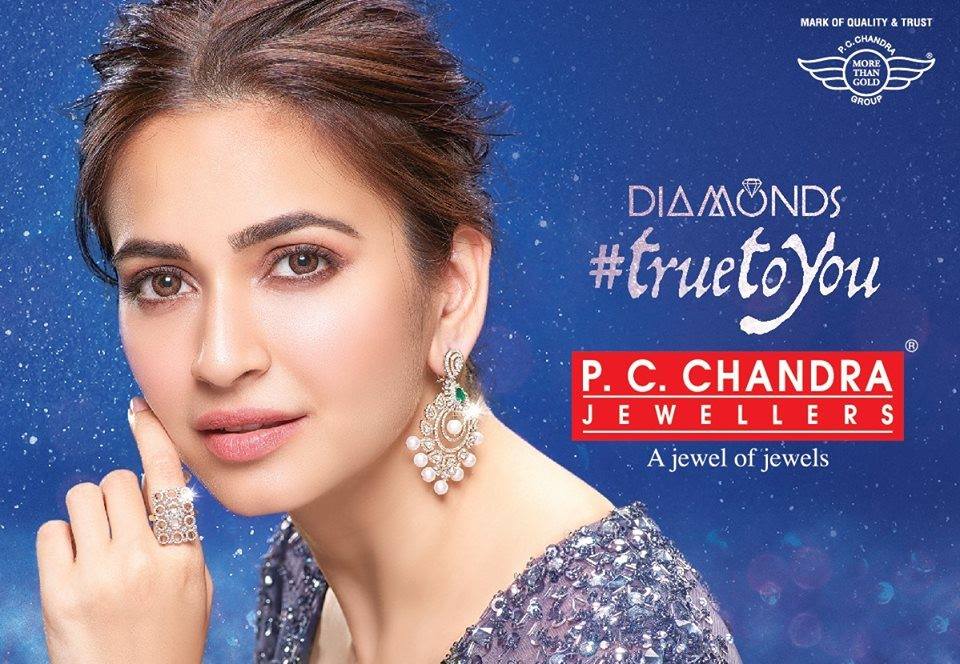What jewellery did you buy this Pujo/ Dhanteras/ Diwali? None? Not even with all the discounts? - "25% off on making charge", "50% off..." on something else. Too bad! Has no husband/ boyfriend/ brother solicitously asked you to download the "ANJALI App" on your mobile so that you can shop gold online without him having to forego office travel or you having to leave a crying baby at home? You are damn unlucky then! For, just like everything else, gold is now available at the click of a button, its stores accessible no matter where they may be located geographically. But does available/accessible automatically make it affordable?? That's an irritating question, I know. Spoils all the fun of this endlessly happy festive season of ours.
It is difficult to resist the temptation to be "happy" (read, "wear jewellery") when the most radiantly beautiful women urge you to it wearing the choicest gold diamond and gems that the best of brands can muster. And they urge you everywhere. Huge billboards of them line up above all the major arterial roads of the city. Looking at them, it is difficult to choose between a Kajol in a JOYALLUKAS choker, a Koel Mullick in signature ANJALI pujo-ensembles, or a Kriti Kharbanda in a new-age P.C. CHANDRA dangler.
These billboards are not new. But over the years they have gone bigger and bolder, rivaling even film posters in their size and grandeur, just as the jewellery they advertise have become heavier and more resplendent. There are many kinds of jewellery on display of course - bridal collections being the most common/popular among them, followed closely by Pujo and Diwali collections.
Who buys those jewellery, I wonder? Who wears them? And where? Apart from the Red Carpet appearances of Superstars in Film Festivals (caps intended) and the weddings/celebrations of the super rich, I can't think of anyone wearing those necklaces, bracelets, earrings... all of which, from the looks of it, must feel heavy on the body as it undoubtedly does on the purse!
Going by the billboards, one would think Indian women have nothing else to do but buy and wear jewellery. Wait. Wear, not buy. For in all the ads, it is either the parents or the husband or the brother who buys them that. You have this feeling that while women choose their own cosmetics, jewellery is given to them. That's actually true, at least in my experience. I know very few women who can afford to buy jewellery for themselves. Especially of the kind that is endorsed up there, whichever way one's head turns - when on a normal harried day one is commuting to work or picking/dropping one's child to school.
It was not always like this, though. Back in the late-90's and early post-millennial years, I liked TANISHQ when it came up with the idea of wearable, affordable jewellery, targeted especially for the working woman. Dainty stuff that one could wear to office, or slightly more elaborate ones that one could choose to deck oneself with while partying or socializing in the evenings. They still have a line of light jewellery - MIA. But you don't see that line on billboards. You only see what Rani Padmavati wore in Rajasthan seven centuries ago; or else, what her screen impersonation can afford to wear on Diwali.
Every city has a gold 'patti' - where you have many small shops trading in gold and jewels for generations clustered together in one neighbourhood. So does Kolkata. The one in Bowbazar in central Calcutta being one of the oldest and most famous of them all. (My wedding set from my parents was bought from there). But there are others, too. When I started teaching full-time in an undergraduate college in South Kolkata way back in 2001, I daily walked past one such cluster in and around Ekdalia on my way back from work. They didn't need to advertise themselves. People came to buy gold from them anyway, all through the year. But there was a perceptible change a couple of years down the line, when I started noticing small rectangular plaques advertising a well-known Bengali jeweller on the railings of dividers on Rashbehari Avenue. The big posters were then still mostly of films and occasionally of products of foreign cosmetic brands - a L'OREAL lipstick or a MAYBELLINE eyeliner. And then a whole new trend began, just around the time I left the country in 2007: more and more names of jewellery shops/brands - some of which I had never heard before - started surfacing on billboards. And it was not just top-notch actresses who endorsed them, but also new and upcoming models.
I confess I am in a time warp. Though I visited Kolkata almost every year in the decade that I was away, and had seen the phenomenon of jewellery obsession unfolding, I find it difficult to gulp in that nonsense now that I am living here. I yearn for the boring gold-patti days when gold was bought and sold without fanfare; and I really wish jewellery had not been blown out of proportion in our skyline. Since it is so far away from the reality of the lives led by most women in India - whether single or married, homemakers or working wives/mothers. And especially given the fact that good jobs are so few and daily living pretty expensive (even in a cheap city like Kolkata).
Who buys all that glitter? I wonder every day, confronted with ever new advertisements, as I go to work at a new University. No academic for sure. In a system where even Ph.D holders can get as abysmally paid as Rs. 300/ per lecture as Guest Faculty, jewellery is a distant dream. Even with the discounts.


